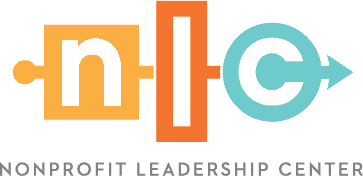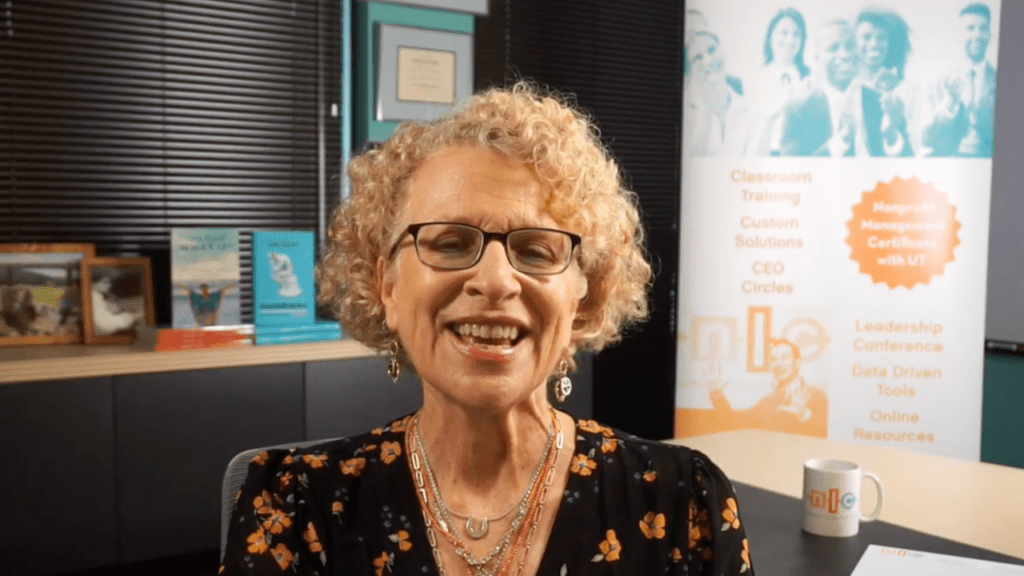Think back to December 31, 2020. New Year’s Eve. We celebrated the end of a year that was like no other, hoping a return to normal was in sight. Vaccinations were on the way. Plans were being made to return to the workplace. The fog seemed like it was beginning to lift. And yet, the new normal became the next normal, and the next normal after that.
While there has been an extreme disparity of experiences during the past two years, the pandemic’s effect on the nonprofit sector has been both inspiring and cautionary. In the words of Dan Cardinali, president & CEO of the Independent Sector, “The US nonprofit sector is the underpinning of our society, and in 2021, we have seen this continue in extraordinary and extraordinarily painful ways.”
I’d like to dig deeper into the extraordinarily painful and extraordinary themes from our vantage point at the Nonprofit Leadership Center.
WATCH: Emily Benham’s 2021 State of the Nonprofit Sector Report
The Extraordinarily Painful
1. Workforce Issues
First, acquiring and retaining talent to successfully carry out nonprofit work has never been more challenging. While this is certainly not unique to the nonprofit sector, the current situation is especially acute for nonprofits with historically lower pay and funder restrictions, which constrains growth and the ability to be competitive in the labor market.
The average tenure of a fund development professional is 16 months (Chronicle of Philanthropy), while nonprofit executive directors and CEOs are in their roles for an average of six years, with this tenure expected to decline (Nonprofit Quarterly). To be successful moving forward, nonprofits must focus on succession planning for both departing CEOs and board leaders. The Nonprofit Leadership Center plans to increase our support in this area to help nonprofit leaders and organizations.
2. Decision Fatigue
How do we protect our employees’ safety while delivering programs to our most vulnerable audiences? How far can we bend our programming strategy to accommodate funder requests without risking mission creep? Constant pressures to make decisions without clarity around what’s ahead can lead to a state New York Times writer Adam Grant has described as “languishing”. He defines languishing as the state between flourishing (or the peak of well-being) and depression (the valley of ill-being.) He says languishing can dull motivation, disrupt the ability to focus and triple the odds that a person will cut back on work.
3. Diversity, Equity & Inclusion
Finally, we’ve seen organizations struggle this year to shift their understanding about the importance of truly embracing a culture centered on the principles of diversity, equity and inclusion. In our most recent 2021 survey of nonprofit leaders, when asked what resources they needed most, DEI rose to the top of the list. NLC has new tools, including assessments and classes, to support nonprofits, and, in 2021, we stood up a new fellowship program to advance racial equity on nonprofit boards for both professionals of color seeking board service and nonprofits interested in diversifying their boards.
While the unity of purpose around this topic may not be shared universally across all organizations, I am reminded of something one of our Leadership Conference participants shared last year: “Courageous leadership is about speaking when your opinion is not popular and taking action even when there is risk.”
The right time to commit to bold action is now.
The Extraordinary
Let’s look next at what’s extraordinary in the nonprofit sector, as we see plenty of it each day.
1. Speed
The speed at which the nonprofit sector has responded during the past two years has been remarkable. Responding to the confluence of crises, creating new environments to counsel clients, distribute food, build homes, hold board meetings, communicate with donors, engage, manage a diverse workforce, organize and stand up movements, rallies, and unimaginable resources at a frenzied pace.
We have officially debunked the overused and tired mischaracterization of the nonprofit sector as being inefficient, wasteful and slow to change. Not the case then. Not the case now.
2. Focus on Mission
We saw attendance improve at board meetings, no show rates decline at counseling sessions, theater productions in parking lots, teams working remotely engaged in both reflection and robust action, building new processes and possibilities for the delivery of critical services. A recent report released by Deloitte found that “social change leaders, inspired by Winston Churchill’s often quoted admonition not to let a good crisis go to waste, are working with a renewed sense of purpose and possibility.”
3. Grace
Call it unity, call it collective action or impact. We see people coming together, despite the divided world in which we live, choosing to find common ground to move issues and our lives forward.
And whether people are drawn to nonprofit work because of a high level of inherent empathy or whether this trait has been burnished by the past months of uncertainty, separation and sadness for many, we see it every day in our work. A dropped Zoom call. A dog or cat making a cameo appearance in a virtual meeting. A parent pulling double duty and helping a child with homework while on a 10-minute break from a virtual class.
There is a palpable sense of commonality in that we are all going through this together.
Where We Go Next
So where do we go from here? What of these learnings from the past 19 months will stick and carry us forward to flourishing, if you are not there already, and to reimagining true, sustainable impact?
Well, I won’t presume to know what the answer is for you, but I can tell you that leading bravely and acting boldly will be essential. Team NLC is here to navigate this with you every day.
“Only when we are brave enough to explore the darkness will we discover the infinite power of our light. “
Brene Brown Tweet
Keep burning bright today and always, my friends. Here’s to leading bravely and acting boldly.


